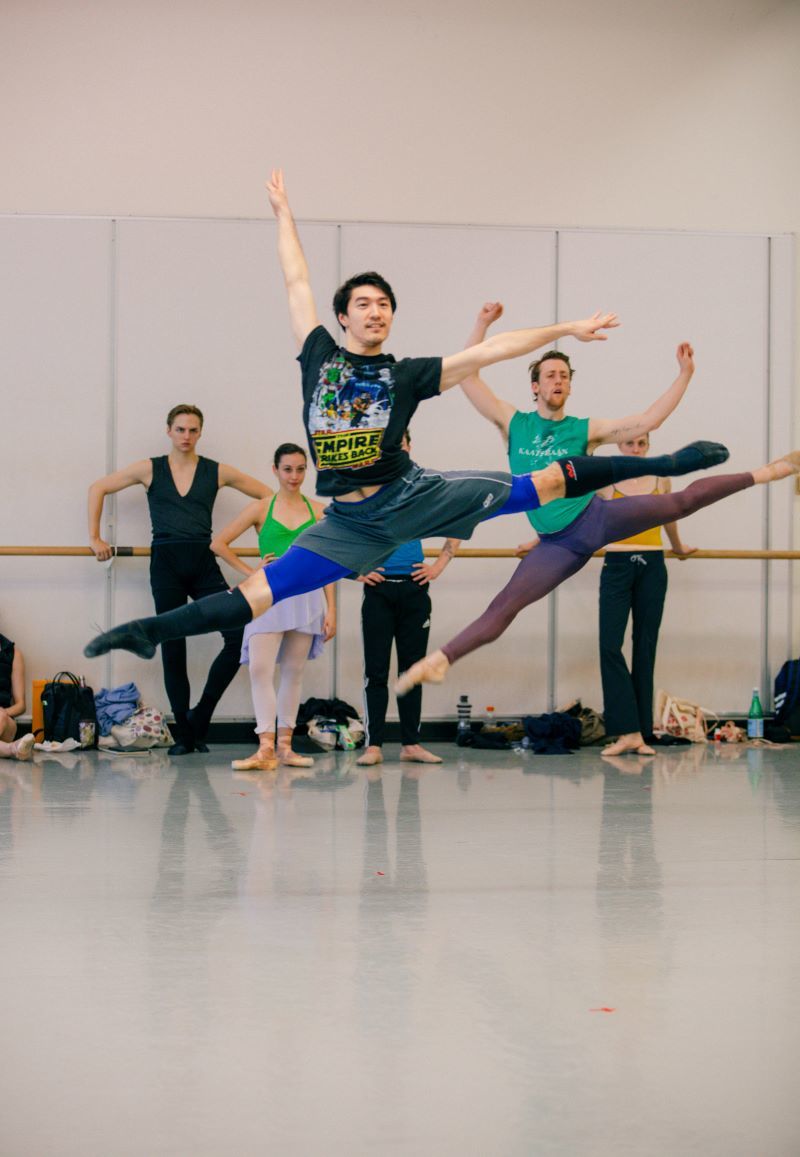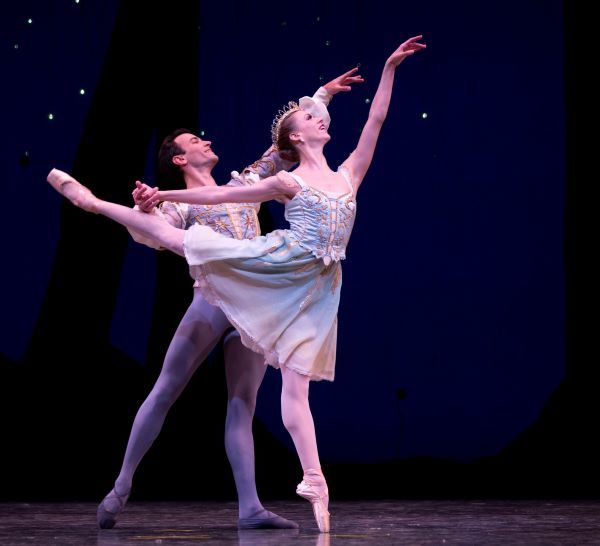A Midsummer Night’s Dream Awakens Audiences at Pacific Northwest Ballet
Preview of A Midsummer Night's Dream at Pacific Northwest Ballet.
Written by Huma Ali, during TeenTix’s Beyond the Review Press Corps Intensive.

George Balanchine's iteration of A Midsummer Night’s Dream has taken form at Pacific Northwest Ballet for the first time in five years. Inspired by Shakespeare's play of the same name, the tale regards love in its many forms—and trickery as a means to define it.
Set in the enchanted woods that surround the borders of ancient Athens, the tale follows the interference of the Fairy King, Oberon, and his jester, Puck, in the romantic relationships between mortal lovers Hermia and Lysander, and the soon-to-be couple, Helena and Demetrius. When Puck mistakenly puts Lysander under a spell causing him to fall in love with Helena, conflict plagues the forest.

This flowery production is exhaustive with bouncing tunes and scurrying movements. Given the chance to sit in a rehearsal, it was evident the characters traveled both seamlessly across the stage and in erupting motions—such movements drawing attention to the surreal value of the choreography. Puck (Ezra Thomson) is a particularly fleet-footed sprinter. At times he executes frantic jumps silhouetted by smooth centripetal sprints. Such a fast paced tempo could work to keep individuals engaged while offsetting the boisterous melodies. At points in the rehearsal when moves were performed incorrectly, Thomson kept the room bright by laughing off his faults—this sense of buoyancy vital to his role.
The ornate costuming seems to add another layer of intrigue to the performance. The Pacific Northwest color scheme, reminiscent of moss greens and lilac purples, is embodied in the dancer’s dress. Additionally, the use of glitter on the dancer’s bodies accentuates the fairy-tale ambiance of the performance. Once they’re paired with stage lights, the costumes will hopefully blend with the shadows for a more forest-like atmosphere. A more brightly lit stage might instead invoke feelings of a spring woodland.
Gary Tucker, PNB’s Media Relations Manager, explained how Balanchine's vision envelopes the majority of the play in Act I, leaving Act II as a solace, an example of ideal love. The entire second act is a wedding celebration. This artistic decision is an obscure one. Shakespeare’s original text gives conflict the bulk of the stage time, but this version gives celebration equal weight. According to Tucker, story ballets have a tendency to focus on jaunty moments, a tradition Midsummer is following that will enhance the themes of love in the piece.

This PNB production accurately and effectively communicates the premise of Shakespeare's story without a need for words. Dramatic expressions and placement of the dancers aid the audience in distinguishing the characters—and it can only help that the dancers are adorned in elaborate and telling costumes. The fairy creatures have wings, Oberon has a crown, Puck is green and detailed with leaves, while mortals wear more royal dress.
A night of love and mischief, confusion and deceit, this magical story can be seen from April 12-21, 2019, at Marion Oliver McCaw Hall.
Lead photo credit:
Pacific Northwest Ballet soloist Angelica Generosa (front center) as Butterfly, and principal dancer Jonathan Porretta as Puck, with company dancers in A Midsummer Night’s Dream, choreography by George Balanchine © The George Balanchine Trust, running April 12– 21, 2019. Photo © Angela Sterling.
This article was written as part of the Beyond the Review Press Corps Intensive.
The TeenTix Press Corps promotes critical thinking, communication, and information literacy through criticism and journalism practice for teens. For more information about other Press Corps programs including the Teen Editorial Staff or the TeenTix Newsroom, see HERE.

